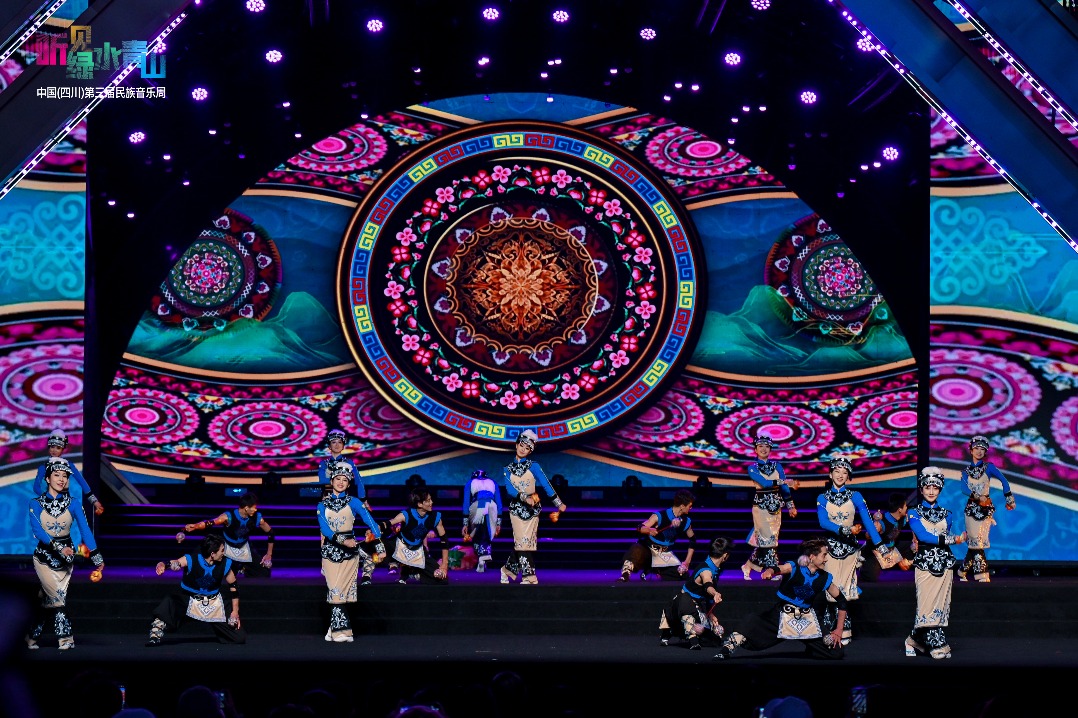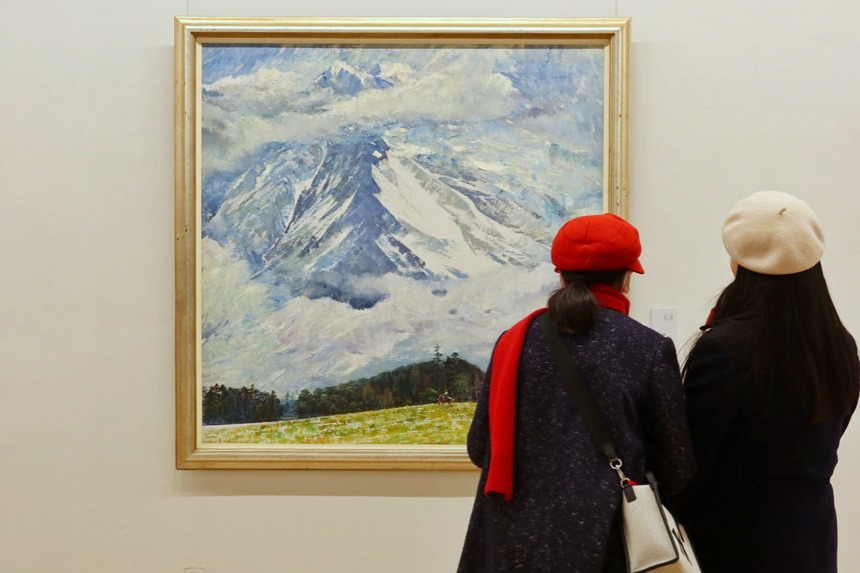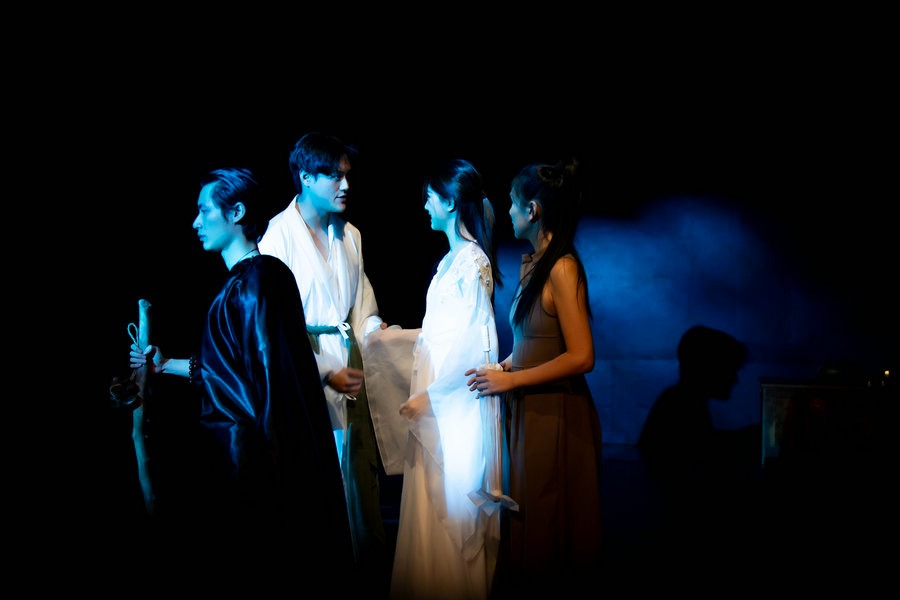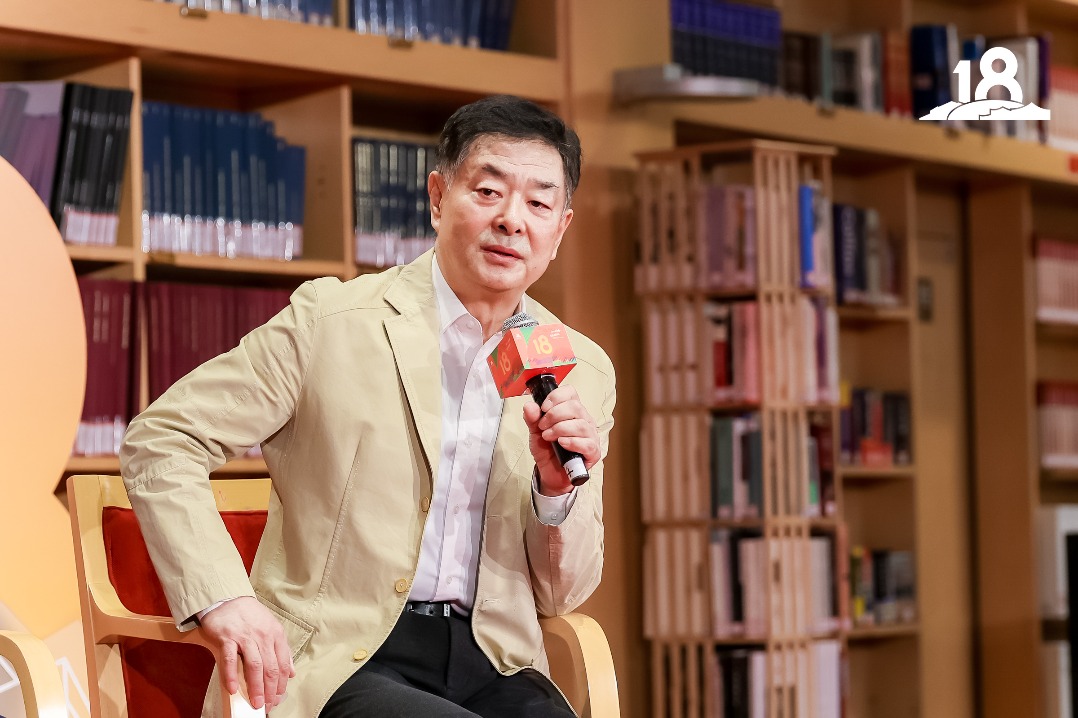Peking Opera shows its true colors
New book reveals the intricacies of costume design and how they embody status and character, Yang Yang reports.


Cultural significance
The dragon motifs on the costumes for male roles also vary according to the personalities of emperors or princes. For painted-face male characters who have a distinctive personality and perform with exaggerated movements, soaring dragons are stitched on their costumes.
In comparison, for male roles whose faces are not painted and more often than not are scholarly, graceful, upright and honest, the dragons on their robes are usually coiled.
Apart from the major five colors — now usually red, yellow, green, white and black, there are five minor colors — blue, violet, olive-yellow, pink and moonlight white. The major colors are usually worn by roles whose rank, status and level of loyalty are generally higher than those wearing the minor colors.
"Pink is not often worn by male roles. But if you see some male characters wear pink, you should be alert. The man must be a lecher," explains Liu Fei, smiling.
In the preface of the book, Liu Zuyan writes: "In terms of the colors and patterns... every detail is imbued with deep cultural significance."
These designs symbolize Chinese civilization and culture, carrying historical and cultural narratives spanning 5,000 years. The strict rules governing their use reflect evaluations of historical figures and embody core Chinese values like benevolence, righteousness, propriety, wisdom and trustworthiness, she writes.
"The book paints lively historical scenes and facilitates a dialogue across time, allowing us to closely experience the profound depth of Chinese costume culture," she says.
Contact the writer at yangyangs@chinadaily.com.cn
- Cross-Strait Guandi Culture and Tourism Festival held in Dongshan, Fujian
- Jixiang Theater celebrates anniversary with Peking Opera events
- Historical dance drama prepares students for the future
- Theater festival promises performances to remember
- Peking Opera production celebrates the spirit of transformation in Xiong'an





























